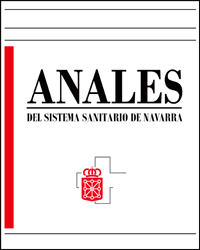Utilisation or organs proceeding from donors with heart failure: review of the pathogenesis of organic damage and the possible mechanisms of prevention. Determinant viability factors
DOI:
https://doi.org/10.23938/ASSN.0597Keywords:
Donantes. Parada-cardíaca. Estrés oxidativo. Determinantes viabilidad.Abstract
There is an evident imbalance between the number of patients awaiting a kidney transplant and the availability of organs proceeding from donors with brain death. A high number of patients die each day from heart failure, whose organs could be used for transplants if specific care is employed. Although centres do exist where these methods of extraction are established, the problems of organic damage have yet to be resolved, since one third of the organs are still lost, besides the increase in the need for early dialysis, and the number of dysfunctioning grafts two years after the transplant, when this type or organ is employed. There is increasingly detailed knowledge of the pathogenesis of organic damage following heart failure and reanimation, as well as of the damage following the conservation and reimplantation of the kidney. Knowledge of the maximum time of hot ischemic that an organ can withstand is of crucial importance if organs are not to be unduly discarded. Besides, the increasing understanding of the physiopathology of oxidative stress could make it possible for us, through the use of antioxidants, to attempt to improve the utilisation of the organs and diminish the incidence of dysfunctions and rejections.Downloads
Downloads
Published
How to Cite
Issue
Section
License
La revista Anales del Sistema Sanitario de Navarra es publicada por el Departamento de Salud del Gobierno de Navarra (España), quien conserva los derechos patrimoniales (copyright ) sobre el artículo publicado y favorece y permite la difusión del mismo bajo licencia Creative Commons Reconocimiento-CompartirIgual 4.0 Internacional (CC BY-SA 4.0). Esta licencia permite copiar, usar, difundir, transmitir y exponer públicamente el artículo, siempre que siempre que se cite la autoría y la publicación inicial en Anales del Sistema Sanitario de Navarra, y se distinga la existencia de esta licencia de uso.








